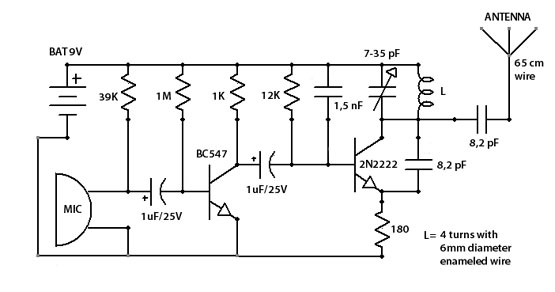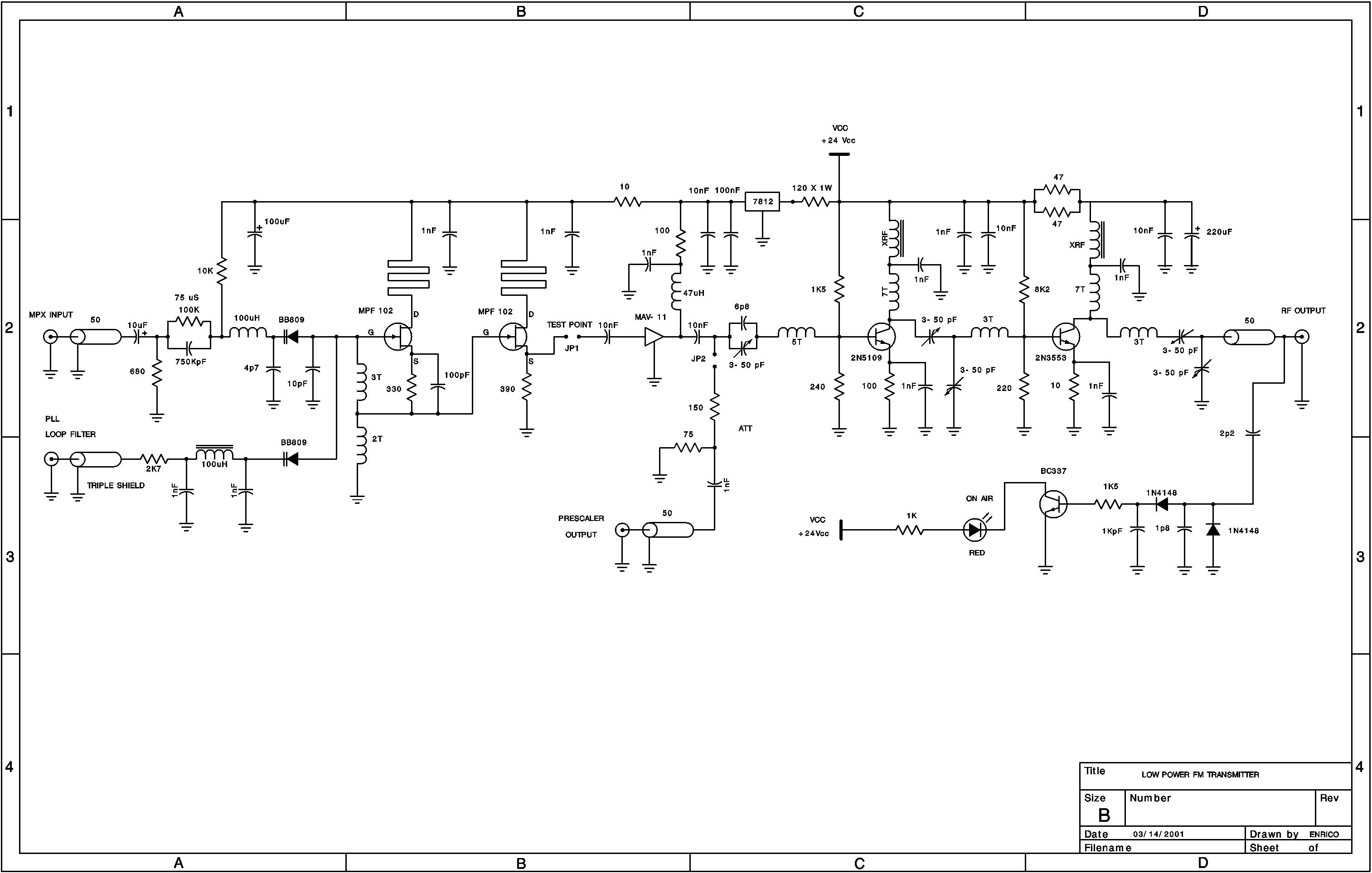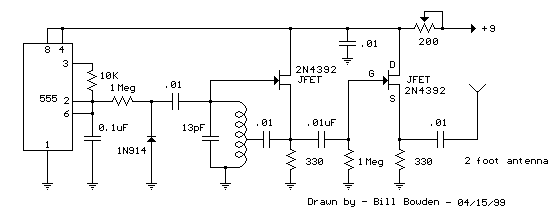
Sensitive FM Transmitter Bug

This simple-to-assemble FM transmitter can effectively transmit voice signals over an impressive range. By adjusting the trimmer, the signal can be heard on a nearby radio. The transmitter operates within a frequency range of 88-108 MHz and has a maximum current consumption of 30mA. It can be powered by a 9-volt battery or connected to a power supply providing 9-12 volts. This device is capable of picking up even faint sounds, such as a whisper or the sound of breath, from a considerable distance away from the microphone, making it an excellent choice for covert transmission applications.
The FM transmitter circuit typically consists of a few key components, including a microphone, an oscillator, a modulator, and an antenna. The microphone converts sound waves into electrical signals. These signals are then fed into the oscillator, which generates a carrier frequency in the FM band (88-108 MHz). The modulator combines the audio signals from the microphone with the carrier frequency, effectively encoding the audio information onto the radio wave.
A trimmer capacitor is often included in the circuit to allow fine-tuning of the transmitter frequency. This is crucial for ensuring that the transmitter operates on a specific frequency within the FM band, which helps avoid interference with other radio stations. The range of the transmitter can be influenced by several factors, including the quality of the antenna, the power supply voltage, and the surrounding environment.
Powering the circuit with a 9-volt battery or a 9-12 volt power supply provides flexibility in terms of portability and usability. The maximum current consumption of 30mA ensures that the circuit can operate efficiently without draining the power source too quickly.
The design of this FM transmitter is particularly suited for applications in surveillance or covert communication, where discreet audio transmission is required. The ability to capture low sounds makes it an effective tool for monitoring conversations or sounds from a distance. Proper assembly and tuning of the circuit are essential to achieve optimal performance and range.This easy to build FM transmitter bug can transmit voice to exceptionally good range. Tune trimmer to hear the signal to your near radio. Transmitter frequency range is 88-108 MHz. Max current consumption is 30mA. You can power the fm transmitter bug with a 9Volt Battery, or you can plug a power supply to feed in 9-12 Volts. That bug will pick even a low whisper or even the sound of a breath well far from the microphone. Great spy transmitter equipment. . 🔗 External reference
The FM transmitter circuit typically consists of a few key components, including a microphone, an oscillator, a modulator, and an antenna. The microphone converts sound waves into electrical signals. These signals are then fed into the oscillator, which generates a carrier frequency in the FM band (88-108 MHz). The modulator combines the audio signals from the microphone with the carrier frequency, effectively encoding the audio information onto the radio wave.
A trimmer capacitor is often included in the circuit to allow fine-tuning of the transmitter frequency. This is crucial for ensuring that the transmitter operates on a specific frequency within the FM band, which helps avoid interference with other radio stations. The range of the transmitter can be influenced by several factors, including the quality of the antenna, the power supply voltage, and the surrounding environment.
Powering the circuit with a 9-volt battery or a 9-12 volt power supply provides flexibility in terms of portability and usability. The maximum current consumption of 30mA ensures that the circuit can operate efficiently without draining the power source too quickly.
The design of this FM transmitter is particularly suited for applications in surveillance or covert communication, where discreet audio transmission is required. The ability to capture low sounds makes it an effective tool for monitoring conversations or sounds from a distance. Proper assembly and tuning of the circuit are essential to achieve optimal performance and range.This easy to build FM transmitter bug can transmit voice to exceptionally good range. Tune trimmer to hear the signal to your near radio. Transmitter frequency range is 88-108 MHz. Max current consumption is 30mA. You can power the fm transmitter bug with a 9Volt Battery, or you can plug a power supply to feed in 9-12 Volts. That bug will pick even a low whisper or even the sound of a breath well far from the microphone. Great spy transmitter equipment. . 🔗 External reference





